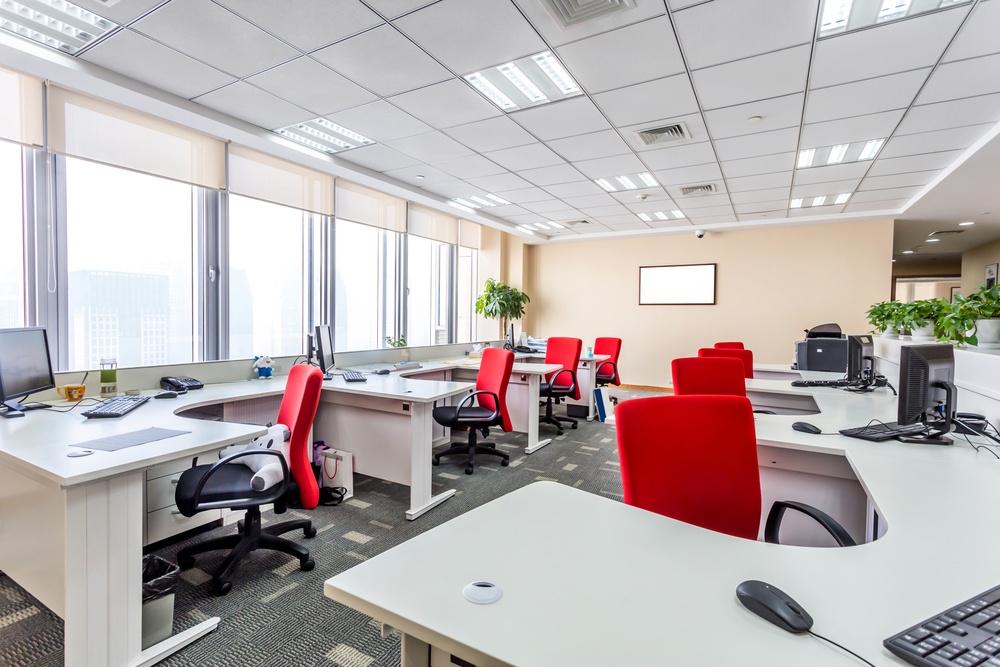Hot-Desking Vs. Assigned Seating
 Contributed by
Amy Picanço
June 22, 2016
Contributed by
Amy Picanço
June 22, 2016

Maximising productivity and efficiency in the workplace is an on-going quest. The debate over what constitutes an ‘ideal’ working environment is subjective and needs to be considered carefully.
Should we or shouldn’t we adopt a hot-desking model? Or should we just stick with our assigned seating plan?
What Do We Mean By The Term ‘Hot-Desking’?
Hot-desking, sometimes known as ‘hoteling’, is the practice of having employees sit in a different workstation every day. In some instances, the office manager assigns the new workspaces each morning, while others have a sit-where-you-like policy. This is a trend that began in North America in the late 1990s, and has picked up steam around the world, particularly in Asia, over the last decade. After years of worldwide practice, the debate still rages on over the benefits and drawbacks to hot-desking in the workplace.
The Advantages Of Hot-Desking
The biggest reason why companies have moved to this practice is because it has been shown to save both space and money. With more people working remotely, the office is rarely at 100% seating capacity. This adds up to a lot of wasted space, day in and day out. Hot-desking allows a company to provide only the workstations they need, which, in turn, allows them to either reduce their square footage or convert the saved space into multi-functional workstations. Other advantages of this practice include:
- It allows people to find a work environment that suits them (i.e. in direct sunlight or in a quiet section of the building).
- It fosters collaboration by allowing people who are working on the same project to work in the same area.
- It breaks down barriers in the workplace by allowing a senior manager and first-year employee to work literally side by side.
- It reduces office clutter by ending the practice of people setting up a ‘home away from home’ and forces them to be more minimalistic with what they bring into the workplace.
The Disadvantages Of Hot-Desking
There are those who will concede that hot-desking can be cost-efficient, but they believe there are still many drawbacks, which should be carefully considered. The most cited argument against hot-desking is that it is unhygienic. There are studies that show that a multiple-user keyboard has five times more bacteria than a single-user keyboard. And having people using the same office phones in the middle of flu season is just begging for trouble. Hot-desking opponents argue that the cost efficiencies gained will be out-weighed by the lost productivity from a spike in employee sick days.
The other counter-arguments include the decrease in morale that occurs when long-term employees can’t personalize their space or achieve a certain comfort level that comes with familiar surroundings. Some people feel it hurts workplace efficiency if you never know where you can find someone on any given day.

The New Path Forward
If I were advising someone wrestling with this issue, I would suggest designing the office in an activity-based workspace (ABW) model. ABW – a phrase thought up by Erik Veldhoen, author of the book The Demise of the Office – is a concept that sees people selecting a workstation for the day based on the activities they will be conducting during that day. It retains many of the benefits of hot-desking, but it takes a more functional approach to the workday.
In the old model of assigned seating, and even with hot-desking, no matter what an employee has to do on any given day, they are expected to do it from the same single pace. Whether it’s report writing, taking a conference call, or preparing a video presentation, it all gets done at the same workstation. By choosing an ABW model design, your employees can go to wherever they will be most productive and will most effectively perform the tasks they have in front of them that day. Some clear benefits are:
- Facilitates better concentration
- Increases productivity
- Promotes a more active and less sedentary workforce
It wouldn’t take a huge financial commitment to redesign your office space to the ABW model. You could easily convert some unused desk spaces to an activity-specific area, such as brainstorming lounges or soundproof concentration spaces.
If you have any specific questions about how an ABW design can work for your company, Aym Design can help you sort through it. Feel free to get in touch, email us with your questions or schedule a call with our experts.










Sorry, the comment form is closed at this time.